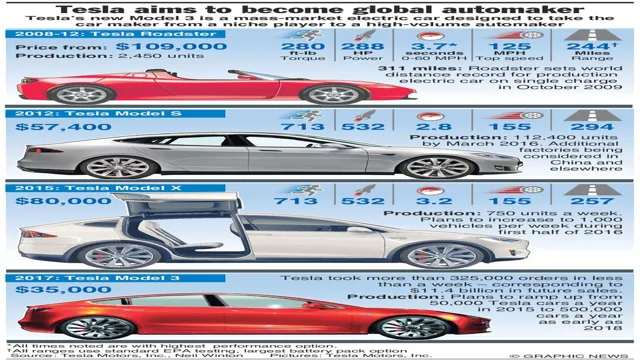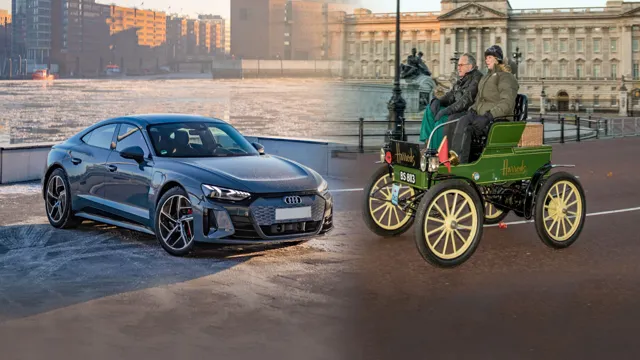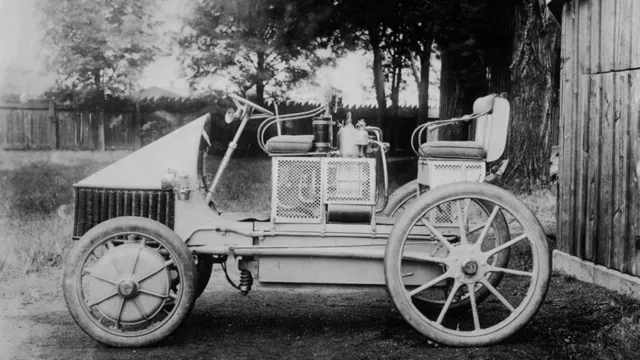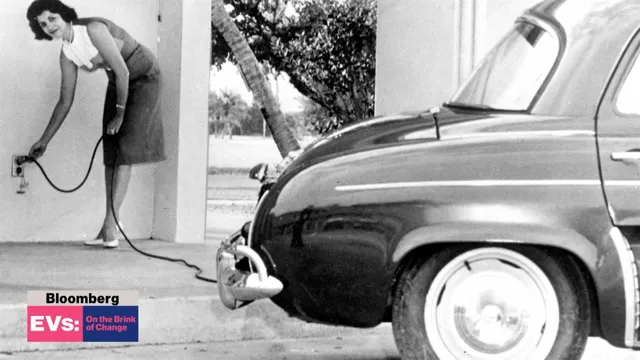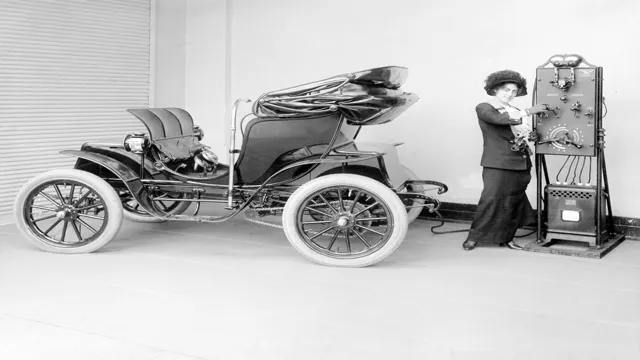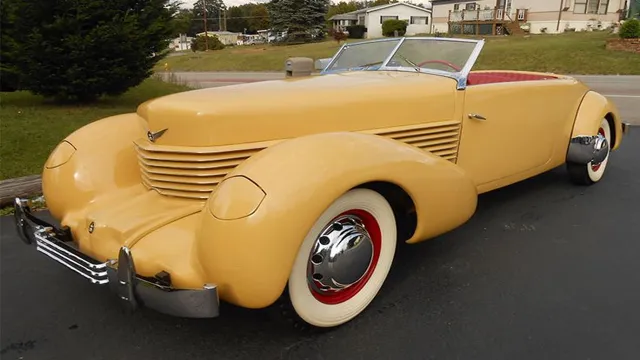Revolutionizing Mobility: A Fascinating Journey Through the History and Evolution of Electric Cars
Electric cars have come a long way from their early beginnings. As the world becomes more environmentally conscious, the demand for electric cars has skyrocketed. Electric cars offer a new way of traveling and are seen as a promising solution for reducing greenhouse emissions and pollution.
The evolution of electric cars has been in progress for over a century. From slow and heavy prototypes to sleek and ultra-fast electric vehicles, the evolution of electric cars is continuous and fascinating. In this blog, we will take a brief look at the history of electric cars, their evolution, and how they have become an important part of our transportation system today.
So buckle up and let’s take a ride through the history of electric cars!
Early Beginnings
A brief history and evolution of electric cars can be traced back to the 19th century when inventors like Thomas Davenport, Robert Anderson, and Thomas Parker worked on electric-powered vehicles. However, it was in the 20th century that electric cars gained momentum with the introduction of the first mass-produced electric car, the Baker Electric in 189 Despite their popularity, electric cars faced several challenges like limited range and high costs, leading to their decline in the 1920s.
Fast forward to the 21st century, the production of electric cars has seen resurgence thanks to technological advancements and concerns over environmental issues. Today, electric cars have gained mainstream acceptance, and several models like the Tesla Model 3, Nissan Leaf, and Chevrolet Bolt EV, have become increasingly popular among car buyers. The shift towards electric cars is not only environmentally friendly but also offers cheaper fuel and maintenance costs.
As we continue to explore green energy solutions, the evolution and production of electric cars will play a vital role in the future of transportation.
Late 1800s: The First Electric Cars
In the late 1800s, the first electric cars began to appear on the streets of major cities around the world. It was a time of innovation and experimentation, and a number of inventors, engineers, and entrepreneurs were working to develop new and more efficient ways to power vehicles. One of the earliest pioneers in this field was Thomas Davenport, who in the 1830s built a small electric motor that he used to power a model car.
However, it wasn’t until the 1870s and 1880s that the technology really began to take off, with inventors like Ányos Jedlik, Thomas Parker, and Magnus Volk all creating electric cars that were capable of carrying passengers. Despite their promise, these early electric cars were hampered by a number of factors, including the limited range of their batteries, the high cost of production, and the lack of infrastructure to support them. Nonetheless, they laid the groundwork for the mass production of electric cars that would come later and paved the way for many of the innovations that we take for granted today.

Early 1900s: The Rise and Fall of Electric Cars
The early 1900s marked the beginning of the electric car era. While gasoline-powered cars were already popular, electric cars were not far behind. These vehicles were seen as a cleaner, quieter, and more efficient alternative to their gas-guzzling counterparts.
In fact, by the turn of the century, electric cars made up a third of all vehicles on American roads. Popular car makers such as Edison, Baker, and Studebaker were quick to jump on the electric car bandwagon. However, their reign was short-lived as improvements in gasoline engines and the discovery of vast oil reserves led to a decline in electric car sales.
By the 1920s, gasoline-powered cars had taken over, and electric cars became a thing of the past, only to make a comeback in recent years with improved technology and growing concerns over climate change.
Revival of Interest
Electric cars have a long and fascinating history, dating back to the late 1800s. In fact, the first electric car was built in 1837 by Scottish inventor Robert Anderson. However, it wasn’t until the early 1900s that electric cars gained traction and were used as a viable option for transportation.
They were popular with urbanites who appreciated the quiet, smooth ride and lack of exhaust. But as the 20th century progressed, gasoline-powered cars became the norm due to their longer range and faster speeds. It wasn’t until the 1990s that electric cars were revived, with the introduction of the GM EV1 and Toyota RAV4 EV.
These cars had a limited range, but their success created a new wave of interest in electric cars. Fast forward to today, and electric cars have overcome many of their initial limitations, with improved range and charging infrastructure making them a more practical alternative to gasoline-powered vehicles. As we look to the future, it’s clear that electric cars will continue to play a significant role in reducing our carbon footprint and helping us transition to a more sustainable future.
1990s: General Motors EV1
The 1990s brought about a renewed interest in electric vehicles with the introduction of the General Motors EV This sleek, aerodynamic car boasted an impressive range of up to 140 miles on a single charge. While the EV1 was only available for lease and had limited availability, it captured the attention of consumers and sparked a conversation about the viability of electric cars.
However, despite its popularity, GM made the controversial decision to discontinue the EV1 program and recalled and crushed all of the leased vehicles, citing cost concerns and lack of consumer demand. Nevertheless, the EV1 remains a symbol of the early push towards electric vehicles and the potential for sustainable transportation.
2000s: Toyota Prius and Tesla Roadster
In the early 2000s, there was a renewed interest in environmentally-friendly automobiles that could significantly reduce carbon emissions. Two iconic vehicles that quickly made their mark in this era were the Toyota Prius and the Tesla Roadster. The Toyota Prius was the first mass-produced hybrid car, and it became an instant hit due to its impressive fuel economy.
The Prius was an innovator, and it quickly set the standard for all other hybrid cars that followed. In contrast, the Tesla Roadster was a zero-emissions, all-electric sports car that gained a large following among car enthusiasts. The Roadster was designed for speed and agility, and it was hailed as a game-changer in the automotive industry.
The revival of interest in hybrid and electric vehicles during this era was necessary as it helped spark further innovation that would lead to more advanced electric cars in the future. The 2000s was truly a remarkable time that opened the door to a new era of cleaner and more sustainable transportation.
2010s: Increase in Electric Car Sales
The 2010s saw a notable increase in sales of electric cars, marking a revival of interest in the technology. As concerns over climate change and the environment grew, more and more people began seeking out eco-friendly transportation options. This, in turn, led to advancements in electric car technology and a wider range of models becoming available on the market.
The rise in popularity of electric cars can also be attributed to their improved performance, increased affordability, and expanded network of charging stations. The keyword “electric car sales” has become an increasingly frequent topic of discussion among car enthusiasts and environmentalists alike, as more and more people embrace this sustainable and efficient mode of transportation.
Future of Electric Cars
Electric cars have been in development for over a century, with the first successful electric car dating back to the 1830s. However, it wasn’t until the 1990s that major companies began to invest in the technology, with the first mass-produced electric car, the General Motors EV1, being introduced in 199 Since then, electric cars have come a long way, with advancements in battery technology and charging infrastructure making them more practical and affordable for average consumers.
With the push towards reducing carbon emissions and combating climate change, the future of electric cars looks bright. Experts predict that by 2030, electric cars will account for 57% of all passenger car sales worldwide. The potential for growth and innovation in the electric car industry is enormous, and it will be exciting to see the developments and changes that come in the years ahead.
Technology Advancements and Revolutionizing the Automobile Industry
The future of electric cars is looking bright as more and more companies invest in innovating this technology. There are already significant advancements in battery life, with some electric cars now having a range of over 400 miles on a single charge. This has led to a surge in demand for these eco-friendly vehicles, as people are beginning to see the practicality and convenience of owning one.
As technology continues to improve, electric cars are expected to become even more affordable, making them accessible to a wider range of consumers. Adopting an electric car not only reduces carbon emissions but also saves money in the long run as they require less maintenance and have lower fuel costs. With the incentives provided by governments and manufacturers, the future of electric cars is promising, and we can expect to see more and more environmentally conscious individuals driving them on our roads.
Global Initiatives and the Push for Sustainable Transportation
The future of electric cars is looking bright as global initiatives push for sustainable transportation. With advancements in technology, electric cars are becoming a more practical and reliable form of transportation. Electric vehicles (EVs) offer significant advantages over traditional gas-powered cars, including reduced emissions, lower operating costs, and improved performance.
Governments around the world are offering incentives for consumers to purchase EVs, including tax credits and rebates. Additionally, major car manufacturers such as Tesla, Ford, and GM are investing heavily in EV production, leading to increased availability and affordability. As the demand for sustainable transportation grows, the future for electric cars looks promising, paving the way for a cleaner and greener future.
Conclusion
From the early days of electric vehicles to the modern age of sleek, high-performance electric cars, the history of electric cars is one of perseverance, innovation, and adaptation. What once seemed like a pipe dream for eco-conscious individuals and automotive enthusiasts alike has become a viable alternative to gas-powered vehicles. As technology continues to advance and infrastructure improves, it’s clear that the electric car is here to stay.
So here’s to the pioneers, inventors, and visionaries who brought us to this point in the evolution of electric cars – may the road ahead be charged with even more exciting developments and innovations!”
FAQs
When was the first electric car invented?
The first electric car was invented in the 1830s.
How did the popularity of electric cars change in the early 1900s?
In the early 1900s, electric cars were highly popular, accounting for almost one-third of all cars on the road.
What factors led to the decline of electric cars in the mid-20th century?
The decline of electric cars in the mid-20th century was largely due to the availability of cheap oil and the development of the internal combustion engine.
What technological advancements have led to the resurgence of electric cars in recent years?
Advances in battery technology, lower production costs, and increased public awareness of the environmental benefits of electric cars have all contributed to their resurgence in recent years.
